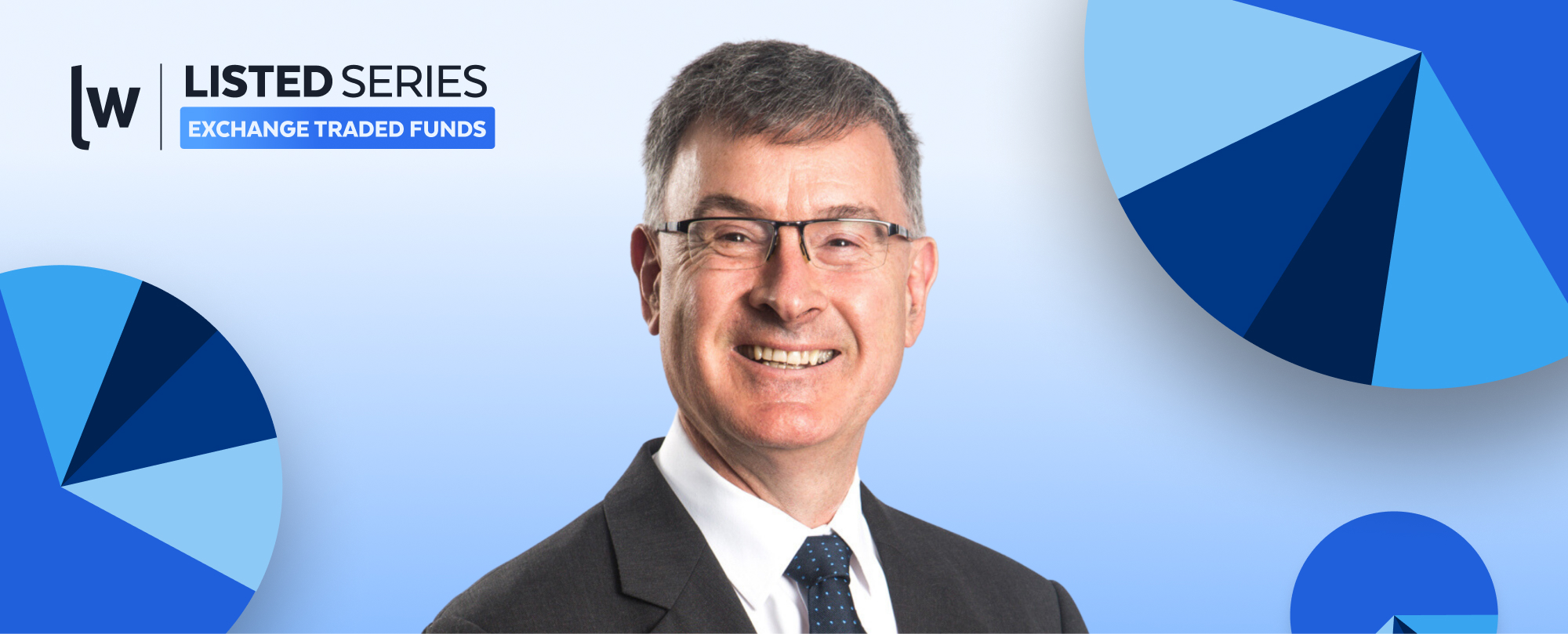How resources investors are tapping into the net zero thematic
Love it or loathe it, net zero is (and will continue to be) one of the leading investment thematics driving markets. 100 regional governments, 800 cities and 1,500 companies have committed to it. Even if just a fraction follow through, that's still an enormous amount of investment.
It’s somewhat ironic that a net zero world will only be possible through renewable systems that require extraordinary amounts of minerals including copper, aluminium, nickel, lithium, and cobalt.
“Although parts of the natural resources sector are far from being carbon neutral, we believe some of these companies have a unique opportunity to enable aggregated carbon reductions equivalent to multiples of the carbon they generate," says Tim Gerrard, Portfolio Manager at Janus Henderson Investors.
As part of Livewire’s listed series, I reached out to Gerrard to find out about the industries and companies that will carry the world to net zero, opportunities and risks they pose, and the process which Janus Henderson employs when it invests on behalf of its clients.
He also takes us through the fund's top holding - a "world leader" that has a footprint all the way along the supply chain.
.jpg)
FUND INFORMATION
- Name: Janus Henderson Net Zero Transition Resources Active ETF (ASX: JZRO)
-
Asset Class: Global equities
-
Description: The Fund is actively managed employing a quality driven, bottom up, fundamental stock selection process to construct a liquid diversified portfolio of investments in companies that are involved in the production and utilisation of resources, equipment and/or commodity-related products that are necessary to enable a transition to a low-carbon global economy and that are well-positioned to benefit from ongoing and future demand for natural resources.
- Objective: The Fund seeks to achieve a total return after fees that exceeds the total return of the S&P Global Natural Resources Index (net dividends reinvested) in AUD over rolling five-year periods.

Can you introduce yourself and the fund you manage including the ASX code?
I'm Tim Gerrard, life-long resource analyst and portfolio manager. Hailing from the pristine New Zealand countryside, the environment and sustainability are passions of mine and so I’m delighted to be managing a fund at the forefront of the transition to a low-carbon economy. The transition is real, as are the investment opportunities.
With our team of four portfolio managers, I manage the Janus Henderson Net Zero Transition Resources Active ETF (Managed Fund), which trades on the ASX under the ticker code ‘JZRO’.
Why did Janus Henderson bring the Net Zero Transition Resources Active ETF to market?
Responsible natural resources companies have a key role to play in supporting the transition to a low-carbon economy. An example is the development of renewable energy systems such as solar, wind, battery storage and electric vehicles on a large scale, which will require significantly larger amounts of minerals including copper, aluminium, nickel, lithium, and cobalt.
Global efforts to decarbonise the world are leading to a new period of transition. More than 120 countries have pledged to reach net zero greenhouse gas emissions by around 2050, supported by more than 100 regional governments, 800 cities and 1,500 companies.
The Janus Henderson Net Zero Transition Resources Active ETF (Managed Fund) (JZRO) has been established to invest in companies whose products, services and activities we consider to be contributing to (or benefiting from), the goal of achieving net zero carbon emissions.
Although parts of the natural resources sector are far from being carbon neutral, we believe some of these companies have a unique opportunity to enable aggregated carbon reductions equivalent to multiples of the carbon they generate.
How does JZRO fit into an investor’s portfolio?
JZRO is designed for investors seeking long-term capital appreciation by investing in a portfolio of companies involved in the production and utilisation of resources, equipment and/or commodity-related products that are necessary to enable the transition to a low-carbon global economy and are well-positioned to benefit from ongoing and future demand for natural resources.
What does it take for a company to make it in the fund?
To determine which companies contribute to the transition to net zero and whether they will form part of the JZRO portfolio, we utilise a quality-driven, bottom-up, fundamental stock selection process.
Our process incorporates the application of both negative and positive filters based on environmental, social and governance (‘ESG’) avoidance criteria and sustainability themes. Each investment is considered on a case-by-case basis by the Janus Henderson Global Natural Resources Team (Team) in consultation with our dedicated Janus Henderson ESG Investment Team, which is comprised of 15 investment professionals.
In the resources industries, coal and oil & gas generally have high ‘Scope 3’ carbon emissions, generated when the energy is released at combustion in vehicles or industrial processes. Our first major screen is to exclude these industries from consideration for the ETF given their high carbon footprint.
What is the biggest opportunity and risk facing your fund?
The transition away from fossil fuels to renewables is the single biggest contributor to carbon reduction. We anticipate vastly more offshore wind and solar facilities to be developed over the period ahead, driving decarbonisation of the power grid. We also expect to see growth in zero-carbon hydrogen production ramp up. Copper, nickel, lithium, steel and aluminium make up the backbone of the technologies that enable growth in renewables and we expect long-term demand for these resources.
From a risk perspective, given JZRO is exposed to companies in metals & mining, such as steel, copper and lithium, which are correlated to economic activity, in a general economic downturn these industries will likely experience a corresponding slow down.
While some bumps in the road are inevitable, the path to decarbonisation is a multi-decade investment theme, with meaningful global commitment ensuring it is not a passing trend.
The transition to net zero involves investment in a lot of nascent assets that don’t have much historical data. How do you manage this risk?
The global commitment to net zero emissions by 2050 is gaining momentum, and investment in innovation will be vital to achieving it. New innovative solutions and nascent technologies will by definition lack the historical data of more established industries, but that does not mean the potential to scale up new technologies into global industries isn’t plausible.
We break down the decarbonisation investment thematic into five underlying sustainability investment themes, with ‘carbon reduction’ being one of our more nascent themes. Within this category, carbon capture, utilisation and storage (CCUS), is included. This emerging, yet rapidly advancing, set of technologies involving the capture of CO2 and its use as a resource or storage deep underground could actually be a significant means of cutting global industrial emissions.
In its 2020 report, the International Energy Agency declared that “reaching net zero goals without CCUS [would] be almost impossible” and that the achievement of the Paris Agreement and energy-related sustainable development goals would require around 2,000 CCUS facilities to be operating by 2040. To put this into perspective, in 2015 there were around 20 CCUS facilities operating worldwide, meaning a 100x growth requirement just to achieve these goals, let alone any additional growth related to CCUS becoming a competitive global industry as rising carbon prices provide a growing financial incentive.
What are the decarbonisation themes in which JZRO invests?
In JZRO, the major theme of decarbonisation is accessed across five broad sustainability groups:
Energy Transition – the move from fossil fuels to renewable energy will see very large growth in generation capacity and add demand for steel, aluminium and other resources.
Sustainable Mobility – the shift to electric vehicles, which requires extra metals including copper, nickel, and lithium is a rapidly accelerating thematic with the global EV market set to grow at a compounding annual growth rate of 33.6%, to reach US$2,495.4 billion by 2027[1]. In 2012, approximately 130,000 EVs were sold. Today, that many are sold within one week[2]. It’s estimated that the supply of critical minerals for EVs will need to rise 3000% by 2040 to meet climate goals[3].
Sustainable Industry – companies that use high levels of recycled material in their production processes can significantly reduce raw materials processing energy and carbon emissions.
Sustainable Agribusiness – agriculture has a huge role to play in decarbonisation. Carbon emissions can be reduced with improved land management, such as more focused application of the right mix of fertilisers. Pressure on arable land, coupled with the need for reforestation sets up sustainable fertiliser as a key requirement to producing the food needed to feed a global population growing to 10 billion in the coming decades.
Carbon Reduction – CCUS is still in its infancy, but is expected to see rapid growth as a means of dramatically reducing industrial emissions. Other methods to reduce emissions, such as planting trees to sequester carbon, may also increase during a period where the value of carbon credits is likely to grow.
Why do materials make up the majority of the portfolio?
JZRO is a resources fund first and foremost, and metals are a vital building block for many of the key enabling technologies, including solar, wind, electricity infrastructure, batteries and EVs to name a few. Without metals, we cannot have decarbonisation.
What’s your top holding and why do you own it?
Currently our largest holding is Vestas Wind Systems (CPH: VWS). It is one of the world leaders in wind power renewable energy generation, and yet at a market capitalisation of US$28 billion (as at 20 March 2023) is only about 7% the size of Exxon or one fifth the size of BHP.
Vestas is growing sustainability by designing, manufacturing, installing, developing, and servicing wind energy and hybrid projects.
With +160 GW of wind turbines installed in 88 countries, the company has already prevented 1.5 billion tonnes of CO2 being emitted into the atmosphere, contributing to a more sustainable energy system.
In our view, Vestas’ shares got overvalued at the end of 2020 and have needed to adjust to higher materials costs in 2021 and 2022, but we think the stage is set for real long-term growth as the energy transition accelerates.
Capitalise on the transition to net zero
Tim and the team believe high quality natural resources companies that are contributing to the net zero transition can generate attractive long-term returns. To learn more, please visit their website or the Fund Profile below.

1 stock mentioned
1 fund mentioned


